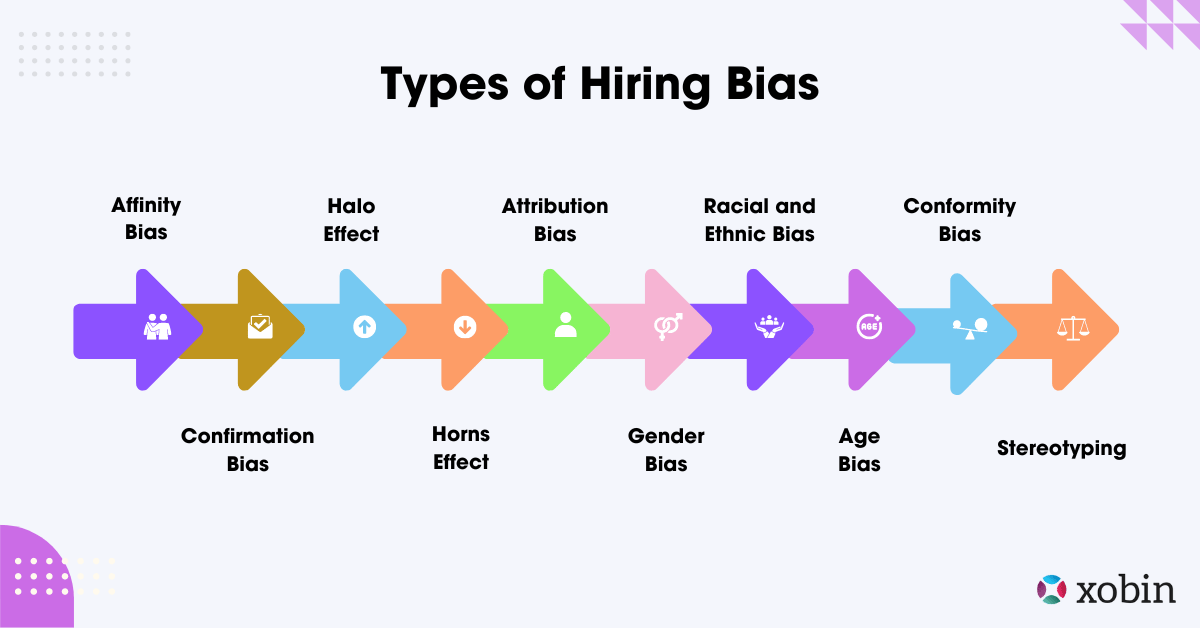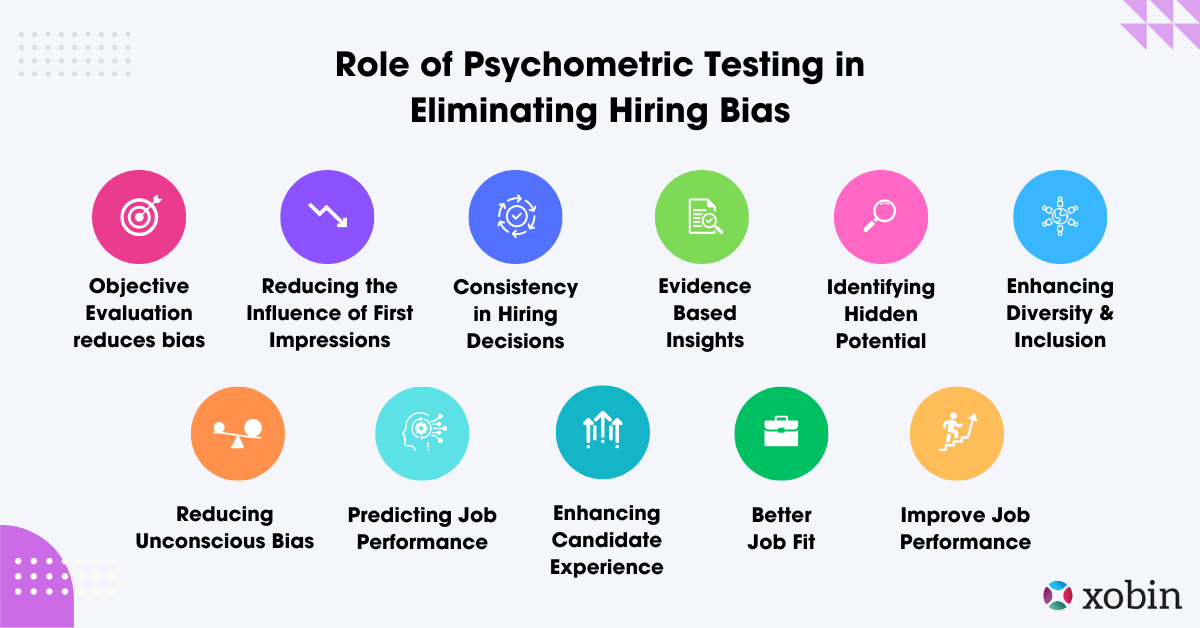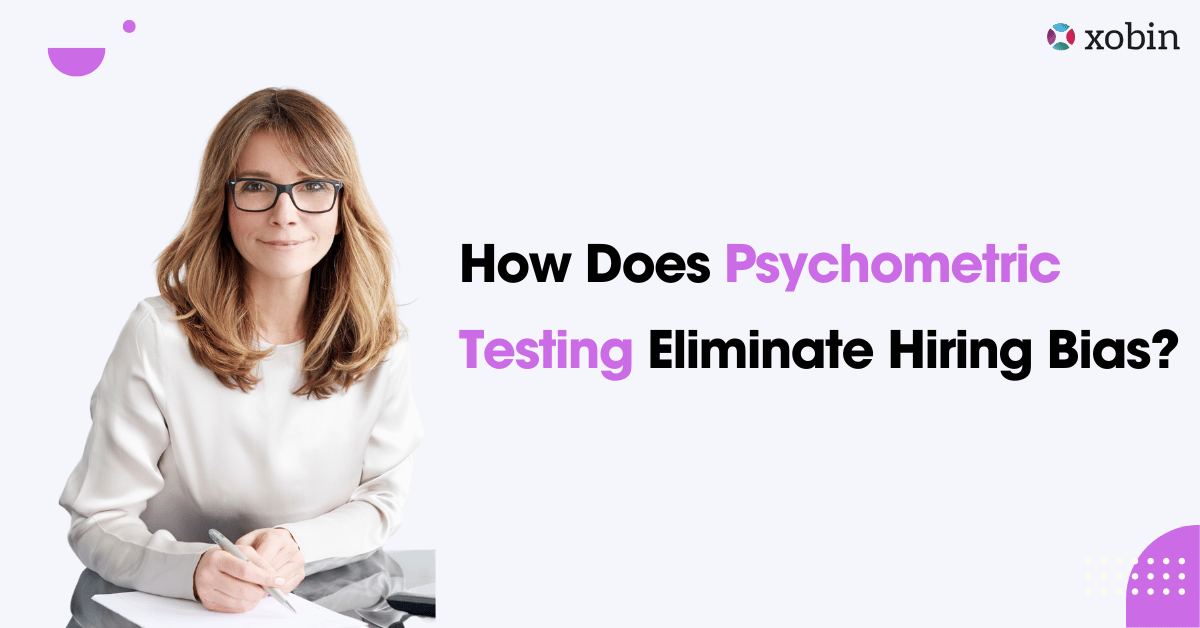Companies strive to create diverse and inclusive workplaces in the modern hiring landscape. However, unconscious biases often enter the hiring process, leading to unfair and non-inclusive practices. One effective tool to combat this is psychometric testing. But how effective is it? In this blog, we will explore how psychometric testing can eliminate hiring bias by delving into several key aspects.
Table of Contents
Is Psychometric Testing Biased?
Psychometric testing measures cognitive abilities, personality traits, and job-related skills of candidates. Unlike traditional interviews, these tests offer objective data that helps make informed hiring decisions. However, the question arises: is psychometric testing itself free from bias?
While psychometric tests aim to be impartial, it’s essential to recognize that no tool is entirely free from bias. Designers, developers, and users must manage these tests carefully to avoid introducing biases. For example, a test designed for a specific demographic may create cultural bias, resulting in unfair outcomes for candidates from diverse backgrounds. Therefore, it is essential to use well-validated and reliable psychometric assessments that have been rigorously tested across different groups.
Types of Hiring Bias

Hiring bias can manifest in several ways and may affect the fairness of your recruitment process. Some common types of hiring bias include:
Affinity Bias
Affinity bias or similarity bias, occurs when interviewers favor candidates with whom they share common interests, backgrounds and experiences. For instance, if an interviewer and a candidate attended the same university, the interviewer might see the candidate more positively. While shared experiences can create rapport, they should not influence hiring decisions. So, recognizing affinity bias is the initial step in ensuring a diverse workforce.
Confirmation Bias
Confirmation bias happens when interviewers seek information that confirms their preexisting beliefs about a candidate. For example, if an interviewer believes a candidate from a prestigious university is inherently more competent, they may overlook flaws and focus on positives. Due to this bias deserving people who don’t fit preconceived notions are passed over. In that case, structured interviews and standardized evaluation criteria help eliminate bias.
Halo Effect
The halo effect is when one positive attribute of a candidate disproportionately influences the overall perception of them. If a candidate excels in one area, such as communication skills, an interviewer might assume they are equally strong in other unrelated areas. This can lead to an unbalanced assessment. To combat the halo effect, it’s essential to evaluate candidates against a comprehensive set of criteria.
Horns Effect
The horns effect does the reverse of the halo effect. One negative trait affects how the entire candidate is seen in this case. For example, if a candidate makes a mistake on the first interview questions, the interviewer might judge their performance harshly. It’s important to identify such biases and appropriately evaluate the candidate’s qualifications and experiences to reduce bias in evaluation. By doing so, you can ensure a more balanced evaluation process.
Attribution Bias
Attribution bias involves attributing success or failure of a candidate unfairly to internal or external factors. For example, if a candidate from a disadvantaged background excels, an interviewer might wrongly credit their success to luck rather than their talent. Conversely, a minor setback might be mistakenly seen as a lack of ability. Overcoming attribution bias requires assessing each candidate’s achievements and circumstances fairly. This can ensure a fair evaluation and improve the accuracy of your hiring decisions.
Gender Bias
Gender bias in hiring can manifest in various ways, from preferring one gender over another for a specific role to making assumptions about a candidate’s abilities based on their gender. This bias limits opportunities for individuals and deprives organizations of diverse perspectives. Implementing blind recruitment practices in which gender-specific information is removed from applications can help reduce gender bias.
Racial and Ethnic Bias
Racial and ethnic bias involves making decisions based on a candidate’s race or ethnicity. This can range from overt discrimination to more subtle forms of bias such as assuming certain traits or behaviors based on racial stereotypes. Promoting diversity and inclusion training and using diverse hiring panels can help address racial and ethnic bias.
Age Bias
Age bias, or ageism happens when employers judge candidates based on their age instead of their qualifications and experience. For example, older applicants might be viewed as less adaptable, whereas younger candidates may be seen as lacking experience. To combat this, focus on skills and competencies rather than years of experience. This approach can reduce age bias and promote a fairer hiring process.
Conformity Bias
Conformity bias occurs when recruiters let others’ opinions influence their hiring decisions. When most of the hiring team prefers a specific candidate, individuals might go along with the majority even if they have doubts. This tendency can suppress diverse perspectives and result in hiring choices that do not serve the organization’s best interests. It’s important to recognize and address conformity bias to ensure a more objective and effective recruitment process.
Stereotyping
Stereotyping involves making assumptions about candidates based on generalized characteristics of a group they belong to, such as gender, ethnicity or age or other demographic factors. Such biases can prevent qualified candidates from being fairly considered for positions. Psychometric testing eliminates the influence of stereotypes by focusing on measurable traits and abilities. This objective approach ensures that candidates are judged on their merits, fostering a fair hiring process.
Is it Possible to Completely Eliminate Hiring Biases?
Eliminating hiring biases is a challenging goal, isn’t it? Human beings are inherently prone to biases, and these biases can subconsciously influence decision-making. However, recognizing and addressing these biases is the first step toward building a fair and effective hiring process. Organizations can actively address biases in recruitment by taking several key steps. They can initiate by implementing structured interviews, which provide a consistent format for evaluating all candidates.
Furthermore, using diverse hiring panels helps to bring different perspectives into the decision-making process. Incorporating objective assessment tools such as psychometric tests can further enhance fairness. Adopting these strategies lets organizations make hiring decisions that are more data-driven and less influenced by subjective judgments. These measures can collectively contribute to a more equitable and effective recruitment process.
Role of Psychometric Testing in Eliminating Hiring Bias

Psychometric testing can play a pivotal role in reducing hiring bias by providing objective and standardized assessments of candidates. Here’s how:
Objective Evaluation reduces bias
Traditional hiring processes often depend heavily on subjective judgments, leading to bias. These biases can stem from the candidate’s appearance, background or even body language. Interviewers may unconsciously favor candidates who are similar or fit their preconceived notions of a “good hire.” On the other hand, psychometric tests are standardized and administered uniformly to all candidates. Therefore, these tests ensure that each individual is evaluated based on their abilities and traits and not on the subjective perceptions. This shift helps create a fairer and more objective hiring process.
Reducing the Influence of First Impressions
First impressions can be misleading and often contribute to hiring bias. Psychometric testing shifts the focus from superficial impressions to actual abilities and traits. These tests provide a deeper understanding of a candidate’s potential, helping hiring managers make decisions based on data rather than gut feelings.
Consistency in Hiring Decisions
Consistency plays a crucial role in reducing bias. Traditional interviews and evaluations can vary widely due to differences in the interviewer or candidate’s moods on any given day. The variability can introduce bias and inconsistency in hiring decisions. However, psychometric assessments offer a consistent benchmark for assessing all candidates. By subjecting every applicant to the same testing process, these tests ensure evaluations are based on uniform criteria. As a result, this consistency enhances fairness and minimizes the chances of biased decisions.
Evidence-Based Insights
Psychometric tests are grounded in scientific research and provide evidence-based insights into a candidate’s suitability for a role. Experts develop these tests using rigorous methodologies and validate them through extensive studies. As a result, these tests ensure reliability and accuracy. Therefore, organizations can make data-driven decisions using the psychometric assessments for hiring needs. This approach shifts the focus from subjective opinions to quantifiable data, further minimizing the impact of personal biases. Consequently, hiring decisions are more likely to be based on merit and job fit rather than irrelevant factors.
Identifying Hidden Potential
Traditional hiring methods might overlook candidates with unconventional backgrounds or those who do not fit the typical mold. Psychometric testing, however, can uncover hidden potential by evaluating traits and skills that might not be evident from resumes or interviews alone. For instance, a candidate with exceptional problem-solving abilities or strong leadership potential might have a different educational background. The test can highlight these strengths, allowing employers to recognize and consider candidates who might otherwise be overlooked.
Enhancing Diversity and Inclusion
Psychometric testing also contributes to diversity and inclusion in the workplace by reducing hiring bias. The test creates opportunities for a more diverse pool of candidates by focusing on objective criteria and minimizing the influence of subjective biases.
A diverse workforce encourages creativity and innovation by bringing plenty of ideas and points of view to the table. Psychometric testing helps ensure that hiring decisions are based on merit, leading to a more inclusive workplace where individuals from different backgrounds have an equal opportunity to succeed.
Reducing Unconscious Bias
Unconscious bias frequently affects hiring decisions, influencing choices based on irrelevant factors like ethnicity, gender or educational background. However, psychometric testing addresses this issue by concentrating exclusively on job-relevant criteria. For example, cognitive ability tests evaluate problem-solving skills, logical reasoning and numerical aptitude without considering a candidate’s background. Consequently, recruiters can make decisions free from unconscious bias if they rely on objective data. Thus, incorporating psychometric testing helps ensure a fairer and more impartial hiring process.
Predicting Job Performance
Another significant advantage of psychometric testing is its ability to accurately predict job performance. Traditional hiring methods rely heavily on resumes and interviews which may only sometimes provide an accurate picture of a candidate’s capabilities. In contrast, psychometric tests assess underlying traits and skills crucial for job success. This predictive power helps select candidates who are qualified and likely to excel in their roles.
Enhancing Candidate Experience
A transparent and unbiased hiring process also enhances the candidate experience. When candidates know their abilities are assessed objectively, they are more likely to perceive the hiring process as fair. This positive perception enhances a company’s reputation as an employer, attracting top talent.
Better Job Fit
Psychometric tests help match candidates to roles that suit their abilities and personalities. This not only improves job satisfaction and performance but also reduces turnover rates. Employees who fit well within their roles are more likely to stay with the company, contributing to long-term organizational success
Improve Job Performance
Ultimately, the goal of hiring is to select candidates who will excel in their roles. Psychometric testing has been shown to predict job performance accurately. By identifying candidates who are qualified and a good fit for the organizational culture, these tests contribute to higher employee satisfaction and retention. When employees are well-matched to their roles, they are more likely to thrive and contribute positively to the organization.
Are Psychometric Tests Effective in Removing Hiring Bias?
While psychometric tests are effective tools for reducing hiring bias, they are not a standalone solution. It’s important to recognize and use their limitations as part of a comprehensive hiring strategy. Some factors to consider include:
Test Validity
Make sure the psychometric tests you use are valid and reliable. They should accurately measure the traits and abilities relevant to the job and have been tested across diverse groups.
Complementary Methods
Relying solely on psychometric tests is not advisable. Instead, these tests can be used with other assessment methods, such as structured interviews and work samples. This combination provides a holistic view of a candidate’s suitability.
Continuous Improvement
Review and update the tests regularly to ensure they remain relevant and free from bias. This includes analyzing test results to identify any patterns of bias and making necessary adjustments accordingly.
Training and Awareness
Train recruiters and hiring managers to use psychometric tests correctly. Emphasize the importance of staying objective during the hiring process. This can help improve decision-making and ensure fairness. Additionally, understanding how to use these tests effectively helps maintain consistency and enhance the overall hiring strategy.
Conclusion
There is no doubt that psychometric testing is a powerful tool in eliminating hiring biases. These tests help create a fairer and more inclusive hiring process by providing objective data and reducing the influence of unconscious biases. Embracing these tests enhances the quality of hires and fosters a diverse and innovative workplace. As organizations strive for equity and excellence, psychometric testing stands out as a vital component in achieving these goals.






